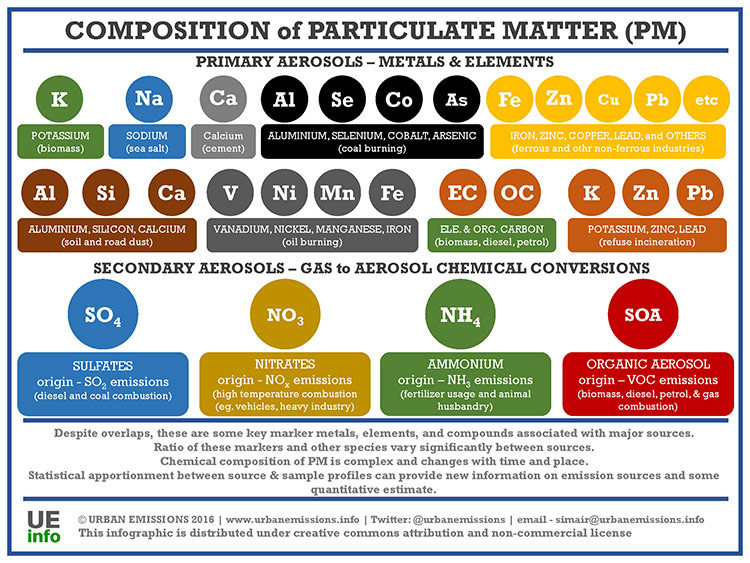For the past several days there has been a lot of talk about PM 2.5 and PM 10. So much so that the very mention of these makes us sit up and pay attention. These two terms are the reason the NCR is choking, dying a slow death.
But what do these terms mean, really? What is PM 2.5 and PM 10? And what do they have to do with pollution?
According to Urbanemissions.info, a website dedicated to information, research, and analysis of air pollution in India, if they had to “pick one pollutant that was super critical for human health, it is PM”, or particulate matter. PM 10 are aerosols with diameters less than 10 micrometres; and PM 2.5 are aerosols with diameter less than 2.5 micrometres, often commonly referred to as dust and soot.
Most of the PM 2.5 pollution is born of combustion-related activities, such as emissions from diesel, petrol and natural gas; and open burning of waste and coal combustion. However, there are also contributory mechanical factors, such as dust arising from construction and heavy traffic.
However, to give you a clearer picture, this is exactly what particulate matter is made up of:

Credit: Urbanemissions.info
However, it is not just particulate matter that is to blame for air pollution. On the one hand are gases such as nitrogen oxides (NOx), sulphur dioxide (SO2), carbon monoxide (CO) and ozone (O3); and on the other are greenhouse gases such as carbon dioxide (CO2), more decisively linked to climate change.
Why is 2.5 PM so harmful?
According to Indian Express, PM 2.5 are those aerosols whose diameters are about 3 per cent the diameter of human hair! Can you imagine how tiny they would be?
Which brings us to why they are so harmful. They can easily be inhaled, pass effortlessly through our nasal and throat tracts and enter our circulatory system. Far deeper than PM 10 can. And this makes it even more dangerous, leading to chronic respiratory issues such as asthma, bronchitis and even heart attacks.
Are there ways to reduce exposure?
1. Yes, stay indoors as far as possible, especially in the early-morning hours. However, that is not the same as saying stop exercising and staying fit. Your lungs will be in a far better condition to battle pollution if you stay healthy. It's best to avoid running, jogging or cycling in the morning from November to January. If the AQI is lower than 300, you can resume light activities, and if lower than 200, feel free to get back to your regular outdoor routine.
2. Don’t send kids less than 7 years old to school if the AQI is higher than 350. Ask the school to suspend outdoor activities and only allow kids to move out in the afternoon hours.
3. Do not use incense sticks till January; use ghee lamps instead.
4. Do not sweep or mop in the morning hours, as there's risk of resuspension of settled particles in the air. Prefer to use warm water while mopping, with a pinch of baking soda in it.
5. Avoid burning anything in the open; if you see someone doing so, raise an alarm or inform CPCB on its website.
Ways to keep yourself protected from the smog:
Though there's not much you can do about the smog, you can take precautions to stay as healthy as possible in this "gas chamber":
1. Invest in a quality N95/99 mask (Venus/3M masks). If you don't have one, at least use a handkerchief when outdoors.
2. When you get inside your car, open the windows and recirculate the air for two minutes. This will help dilute the CO, or carbon monoxide, concentration inside the car. Also run your car AC for some time in indoor circulation. Every car has AC filters that can reduce PM 2.5 substantially.
3. Use air purifiers at home (only with hepa, and pre-filters. This is especially important if you have children, elderly people or pregnant women at home.
4. Ventilate your house between 3 pm and 5 pm every day — this is the time of the day when PM 2.5 levels are at their lowest.
5. Sprinkle water on your premises or on the roads to settle dust.
Can diet help?
A good diet can go a long way in helping you combat the effects of pollution.
1. Load up on antioxidants. So grab packs of green tea when you are out grocery shopping. Even leafy vegetables such as spinach and lettuce are high in antioxidants and help build immunity.
2. Increase intake of vitamin C, vitamin E and beta carotene. Which means include generous amounts of citrus fruits, peanuts, almonds, fish, and herbs such as oregano, basil and parsley. If you already suffer from respiratory ailments, black pepper, basil, liquorice , nutmeg, mint and galangal can be useful.
3. Eat jaggery, or gud, to flush out pollutants from your lungs. Simply replace your processed sugar with jaggery in all your preparations.